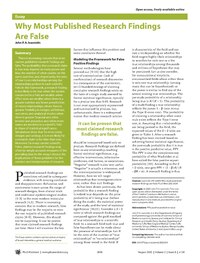
Photo from wikipedia
The credibility of scientific research has been seriously questioned by the widely claimed “reproducibility crisis”. In light of this crisis, there is a growing awareness that the rigorous standardisation of… Click to show full abstract
The credibility of scientific research has been seriously questioned by the widely claimed “reproducibility crisis”. In light of this crisis, there is a growing awareness that the rigorous standardisation of experimental conditions may contribute to poor reproducibility of animal studies. Instead, systematic heterogenisation has been proposed as a tool to enhance reproducibility, but a real-life test across multiple independent laboratories is still pending. The aim of this study was therefore to test whether heterogenisation of experimental conditions by using multiple experimenters improves the reproducibility of research findings compared to standardised conditions with only one experimenter. To this end, we replicated the same animal experiment in 3 independent laboratories, each employing both a heterogenised and a standardised design. Whereas in the standardised design, all animals were tested by a single experimenter; in the heterogenised design, 3 different experimenters were involved in testing the animals. In contrast to our expectation, the inclusion of multiple experimenters in the heterogenised design did not improve the reproducibility of the results across the 3 laboratories. Interestingly, however, a variance component analysis indicated that the variation introduced by the different experimenters was not as high as the variation introduced by the laboratories, probably explaining why this heterogenisation strategy did not bring the anticipated success. Even more interestingly, for the majority of outcome measures, the remaining residual variation was identified as an important source of variance accounting for 41% (CI95 [34%, 49%]) to 72% (CI95 [58%, 88%]) of the observed total variance. Despite some uncertainty surrounding the estimated numbers, these findings argue for systematically including biological variation rather than eliminating it in animal studies and call for future research on effective improvement strategies.
Journal Title: PLoS Biology
Year Published: 2022
Link to full text (if available)
Share on Social Media: Sign Up to like & get
recommendations!